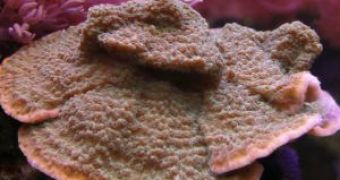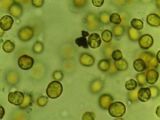New analysis of corals studies predict that - despite previous optimistic views - about 75 % of the world's coral reefs won't cope with warming climate change.
Corals have physiological mechanisms to cope with physical factors like increased temperature and sunlight. But these mechanisms are effective for short periods and up to defined limits.
If global temperatures increase in the predicted way, water temperatures in a century will be much greater than those that trigger bleaching (reef's death) now, so corals would need to acclimatize continually to survive. Acclimatization is limited and unlikely to allow corals to adapt to the predicted water temperatures. Through natural selection, the coral colonies that cannot tolerate higher temperatures will vanish.
Different colonies of the same coral species may respond differently to thermal stress. Only the most temperature-tolerant corals survive a bleaching episode and their offspring might be on average more temperature-tolerant than the previous generation.
But there might be limits to how high the temperature can increase before corals reach the limits of adaptation.
Such adaptations occur slowly, over several generations (most corals have generation times of at least 5-10 years), but potential rates of adaptation have never been estimated.
Larvae from warm-adapted coral populations may disperse to cooler areas as these get warm, thus changing the distribution of species. Corals can have several types of symbiotic algae called zooxanthellae (photo) in their tissues.
In fact, they are kept alive by their algae which supply them with nutrients, and the death of these algae triggers - by starvation - the death of the colony and, subsequently, of the reef.
Corals may adapt to warmer conditions by forming new, additional symbiotic relationships with algae, changing the dominant type of algae within their tissues. Corals with a certain type of algae can tolerate temperatures with 1-1.5?C higher than corals of the same species that have no such type.
Two studies published in 2004 offered hope that some corals had coped with changing water temperatures by hosting new types of algae. Corals along the Panama coast were able to change one type of Symbiodinium algae - type C - to type D.
These corals survived the devastating 1997-1998 El Ni?o event that causes elevated sea temperatures of up to 5?C on the longitude line that crosses Peru and Ecuador.
Scientists do not know how many of the 400 or so species of hard corals (reef forming corals ) can change the type of dominant algae, or what stimulates the change.
Increased temperature tolerance may also come at a cost. For example, juvenile corals with heat-tolerant algae grow up to three times slower than those with a different algae type. The type of algae that occurs in the corals may also affect other aspects of coral fitness.
It is possible that a combination of natural selection and changing algae may help corals cope with climate change over the next few decades. Faster rates of change are more possible for algae than for the coral animal, because the algae have shorter generation times.
A review of previous studies on 442 coral species coral made by Tamar Goulet at the University of Mississippi in the US suggests that only 23% of them would be able to adapt in this way. The only corals documented to be able to make this change are those that can host multiple algae. And those that can host only one type of algae become bleached and die.
It is possible that adaptable species of coral are more prevalent, this is not well documented and further studies are necessary.
These latest findings add to already bleak predictions for the world's coral reefs, which are also threatened by coastal pollution and acidifying oceans. These stress factors cause coral to lose the algae. Some experts have predicted that Australia's Great Barrier Reef will lose 95 % of its living corals till 2050.

 14 DAY TRIAL //
14 DAY TRIAL // 
